The neo-Gothic mansion in Milan filled with instruments is where ageing musicians go to retire
Each year, Casa Verdi is inundated with applications from artists who want to live out their twilight years in a mansion surrounded by instruments. Once you see inside, you'll understand why. Sally Mcgrane explains
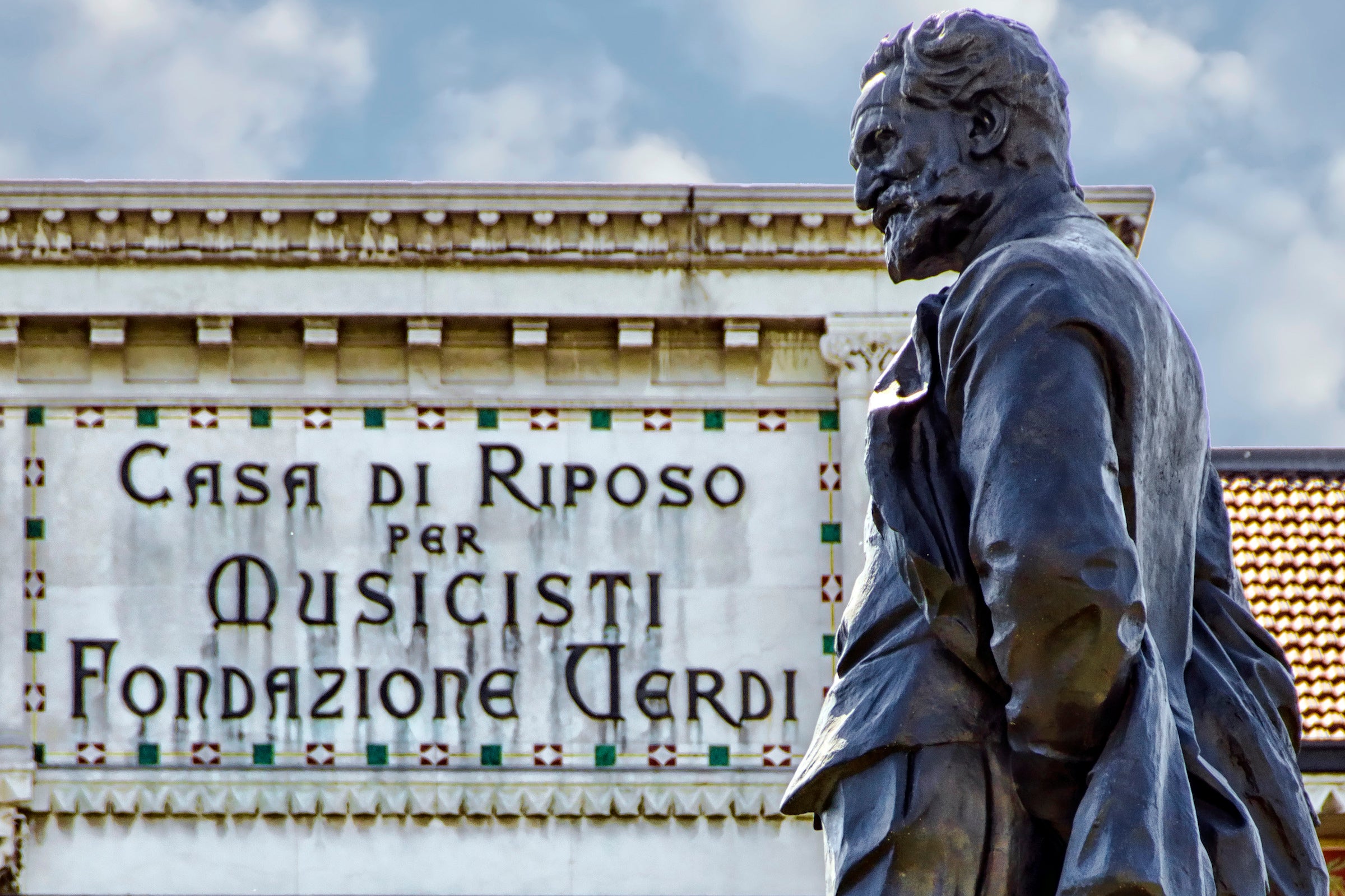
Your support helps us to tell the story
This election is still a dead heat, according to most polls. In a fight with such wafer-thin margins, we need reporters on the ground talking to the people Trump and Harris are courting. Your support allows us to keep sending journalists to the story.
The Independent is trusted by 27 million Americans from across the entire political spectrum every month. Unlike many other quality news outlets, we choose not to lock you out of our reporting and analysis with paywalls. But quality journalism must still be paid for.
Help us keep bring these critical stories to light. Your support makes all the difference.
There was a buzz as some two dozen concertgoers in silk scarves and sparkling jewels arrived with the help of wheelchairs, walkers and canes, and took their seats in the ornate, hardwood-floor concert hall of Milan’s Rest Home for Musicians, known as Casa Verdi, which is run by the Giuseppe Verdi Foundation.
A hush fell, as two musicians in evening dress took up their positions behind two golden harps. The room filled with shimmering music by Debussy. The audience was rapt.
“Bravo,” murmured Luisa Mandelli, a soprano who sang with Maria Callas at La Scala in Milan.
Then she cocked her head in dismay: Two seats away, a nattily-dressed tenor in a black suit and tie had begun snoring gently.
“He’s 98,” whispered Mandelli, who is 95. She leaned over and slapped her former colleague’s knee.
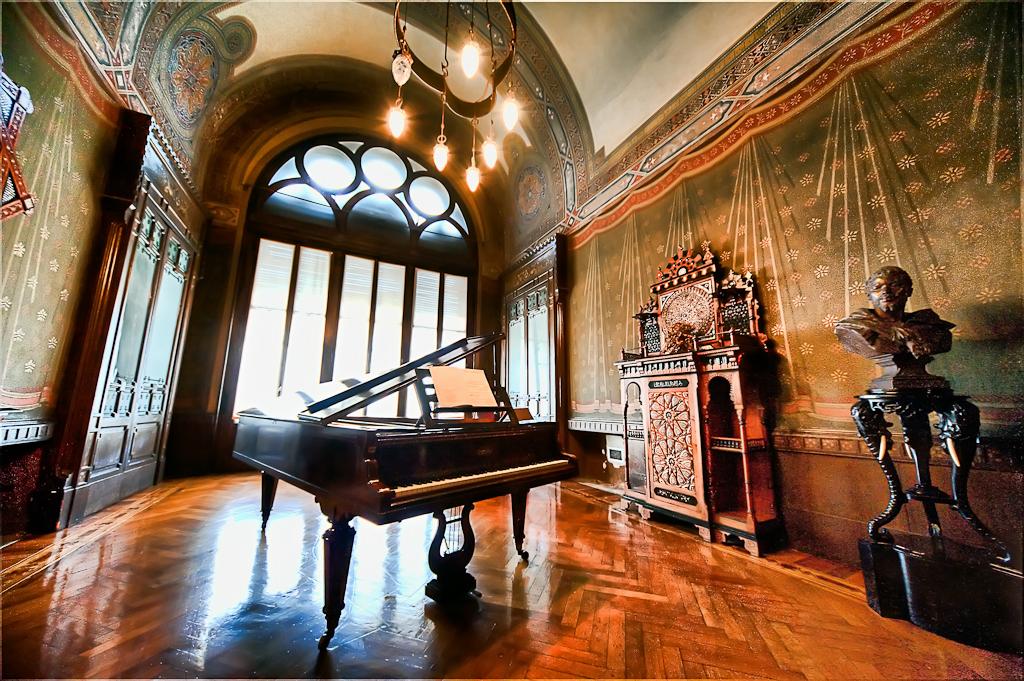
Mandelli is one of 60 older musicians living in Casa Verdi, a sumptuous neo-Gothic mansion built in central Milan by Verdi. Completed in 1899, the building was created as a sanctuary for musicians who found themselves poverty-stricken in old age, “Old singers not favored by fortune, or who, when they were young, did not possess the virtue of saving,” as Verdi wrote in a letter at the time.
Nowadays, pensions and social security have reduced the economic necessity of a refuge like this, said Roberto Ruozi, president of the Giuseppe Verdi Foundation, which uses investments made with the royalties from the composer’s operas to fund the rest home. Residents pay on a sliding scale, according to their means.
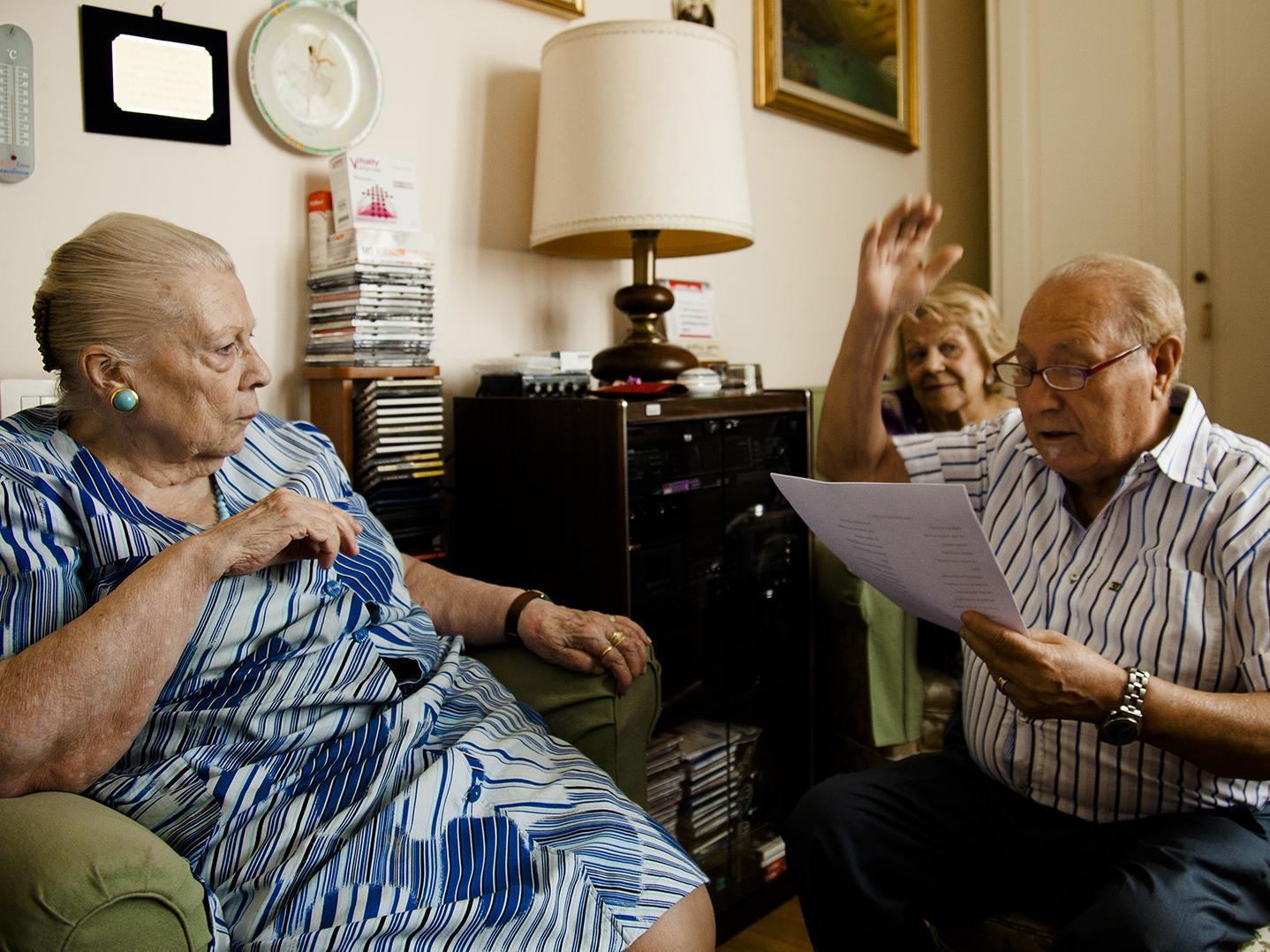
Nonetheless, Casa Verdi is inundated each year with applications from composers, conductors, singers, orchestral players, music teachers and anyone else who has “exercised the art of music as a profession,” as the foundation’s website puts it. Once applicants establish their professional bona fides, Casa Verdi’s board makes choices based on who they think will be a good fit.
The successful applicants get to spend their last years in a place where, in addition to room, board and medical treatment, they have access to concerts, music rooms, 15 pianos, a large organ, harps, drum sets and the company of their peers.
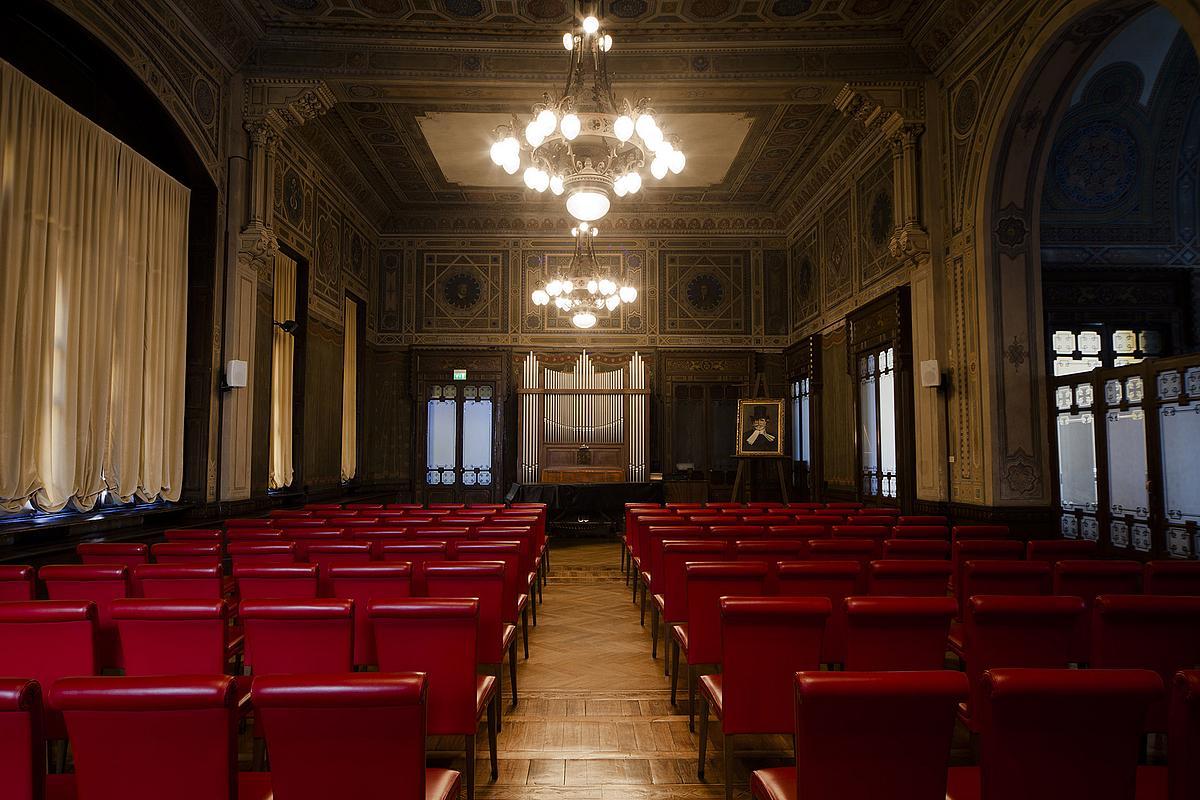
“Now, the majority of our clients are not in very bad economic condition, but wish to continue to play, and be involved with, music,” Ruozi said. Casa Verdi’s talented clientele have the same needs as other old people, with some exceptions, he added: “First, they need music. Second, they want to be treated not as common guests, but as special guests — as a star.” Ruozi sighed. “We have 60 old musicians and 60 stars.”
Upstairs, in an elegant sitting room, two residents waited for the lunch hour. Sitting in comfortably overstuffed red armchairs, they reflected on what they liked about living here. “We’re not missing anything,” said Angelo Loforese, a 98-year-old tenor who is currently the oldest person living at Casa Verdi. “You can get a manicure, a haircut, a shave.”
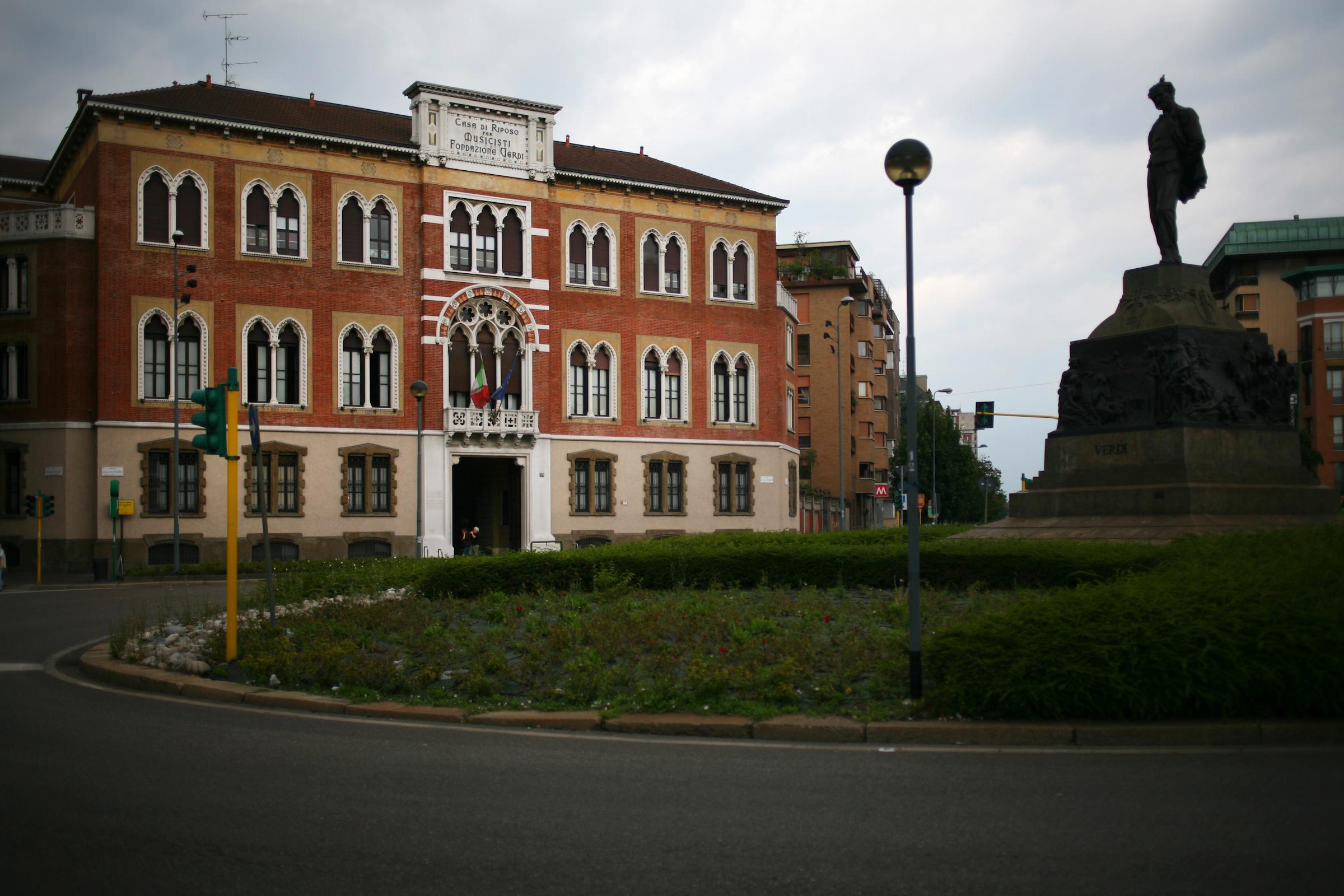
Lorenzo Saccomani, 79, nodded in agreement. Explaining that he had sung some of his first roles onstage with Loforese — who at the time was much more experienced — Saccomani said Casa Verdi felt like home. “We found some of our colleagues,” he said.
As if to illustrate Saccomani’s point, conductor Armando Gatto, 89, came in, pushing his walker. Dressed in a wool suit and dark glasses, Gatto was greeted as “maestro” by the two singers, both of whom he conducted onstage as younger men. “It feels protected here,” said Gatto, who worked all over the world before moving to Casa Verdi with his wife, a soprano, who is now 90. “I feel respected and loved.”

A 96-year-old violinist in bright pink lipstick and golden slippers nodded when the men asked if it was time for lunch. They stood, and made their way to the airy dining room. A few minutes later, they were joined by Beatriz Cortesão, 19, a harpist, who was wearing jeans. Cortesão is part of a relatively new tradition: In 1998, Casa Verdi decided to try renting rooms to music students.
While some of the old musicians were wary, the experiment turned out to be a success, and today, 16 students live in Casa Verdi. They are charged a low rent, and they join the older musicians at mealtimes. Old and young agreed that the arrangement was a good one: Younger musicians learned from the older ones, while the older musicians said they were happy to have young people around who shared their love of music.
Cosimo Moretti de Angelis, 25, another student who lives at Casa Verdi, said that he tried to teach the older musicians how to use the internet. “We talk about everything — music, but also everyday problems, politics, elections, technologies,” de Angelis said, adding that he felt very lucky to live in a place where he could practice the piano any time he wanted.
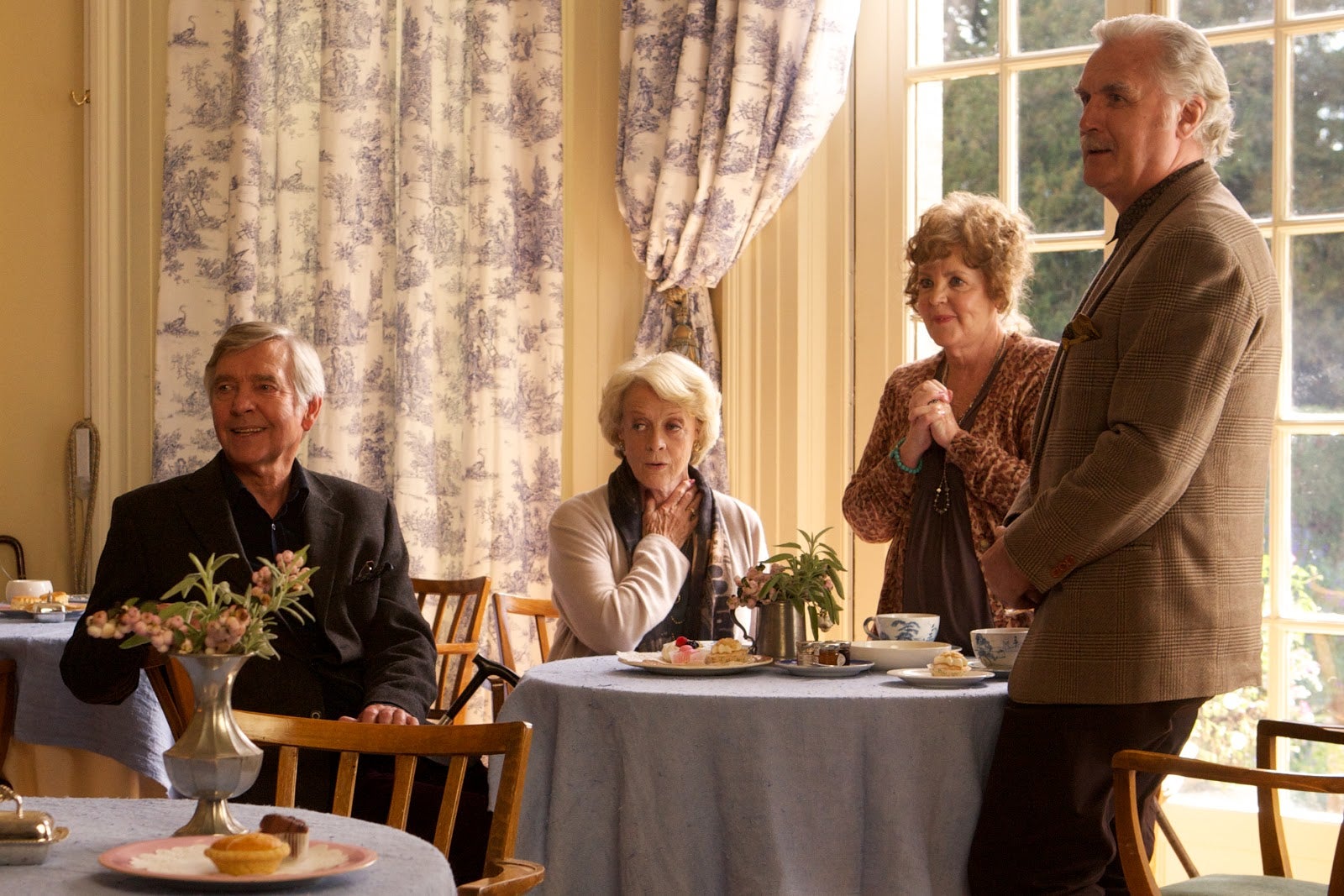
But not everyone said they were happy. In a bedroom decorated with black-and-white photos of himself in costume, Claudio Giombi, a baritone, said fellow residents complained too much about their aches and pains.
Since moving here six years ago, the 80-year-old and his wife said they had given up trying to run musical projects with other residents. “There is always a sharp tongue — the envious ones — a lot of people here say ‘What does he want? Is he looking for the limelight?’”
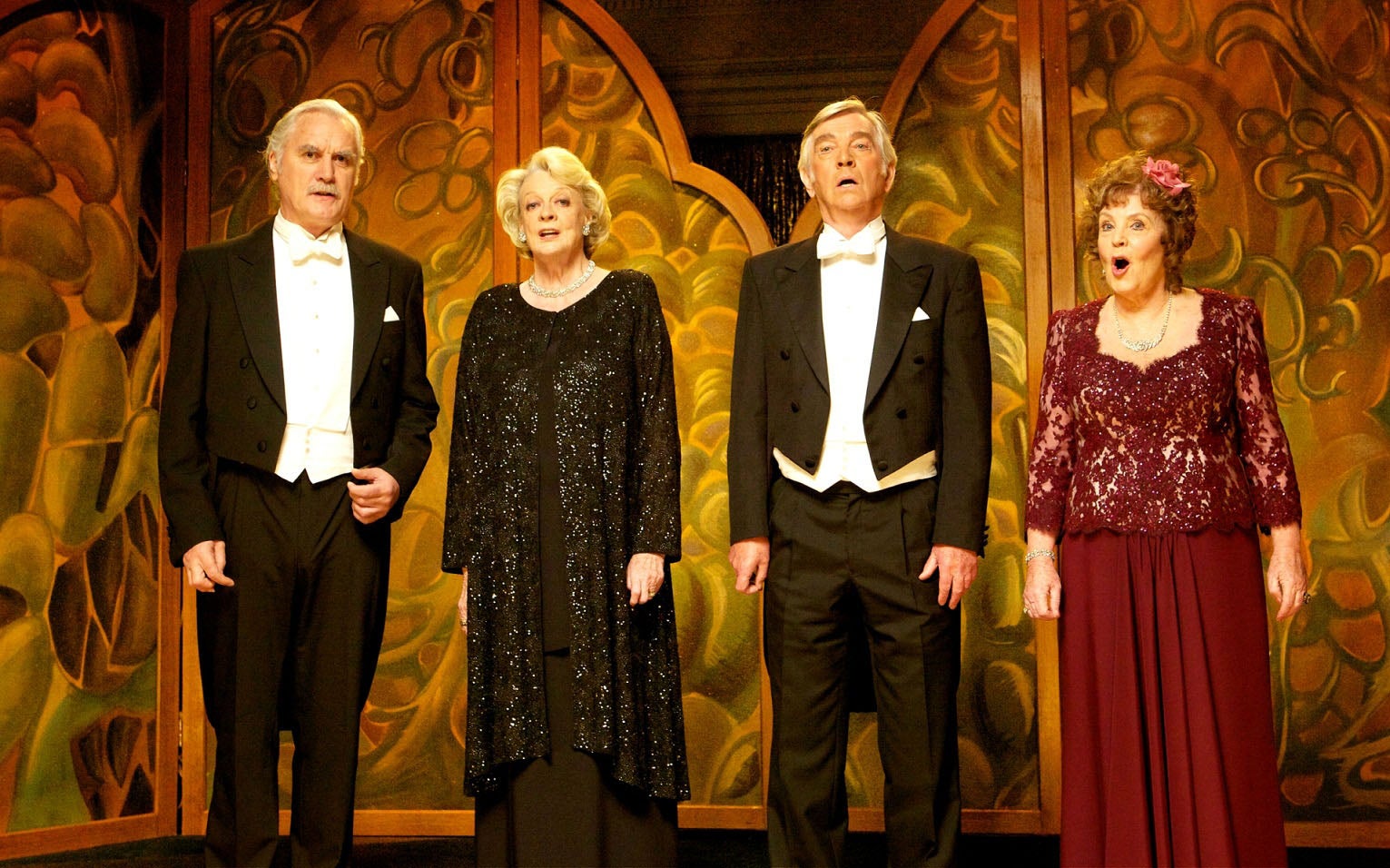
Despite their frustrations, Giombi and his wife said they enjoyed the concerts regularly held by Casa Verdi — among other performances, La Scala sends singers over several times a year — and Giombi said he liked his morning ritual of reading the newspaper in the library.
Mandelli, the soprano, acknowledged that getting older came with limitations: Her left leg began hurting recently, and now she only takes the metro to see performances at La Scala four times a week, instead of every night. “I’ve become lazy,” she said.
Bissy Roman, taking a break from Casa Verdi’s afternoon bingo game — which, she said, she never wins, anyway — said she was originally from Romania, but had worked all over the world, including in New York, as an opera director and music teacher, before moving to Casa Verdi two years ago.
“I am alone, I never married, my family is music,” the 93-year-old said. “So, I was obliged to find a solution for my old age.”
Here, like many other residents, she continues to teach. And Roman is also trying to learn Hebrew and Korean, in addition to the seven European languages she already speaks fluently. Roman said she liked being in Milan, close to La Scala, surrounded by music and fellow musicians.
As the bingo game ended, Gatto, the conductor, put away his winnings — chocolate bars and biscotti — and prepared to move to another room for a pre-dinner concert. “We speak about the music, the life, the memories,” he said, nodding his agreement with Roman. “It’s lovely to be in this company.”
© New York Times
Subscribe to Independent Premium to bookmark this article
Want to bookmark your favourite articles and stories to read or reference later? Start your Independent Premium subscription today.
Join our commenting forum
Join thought-provoking conversations, follow other Independent readers and see their replies
Comments